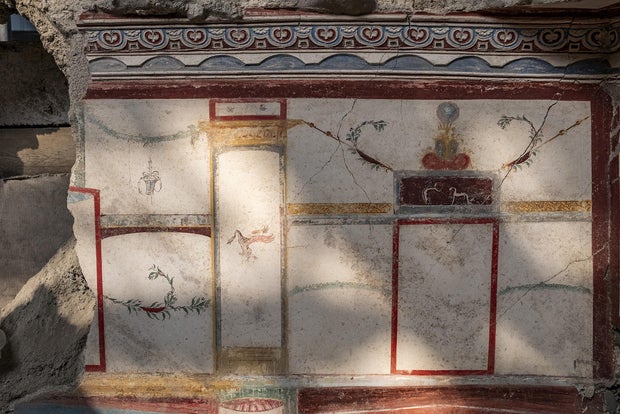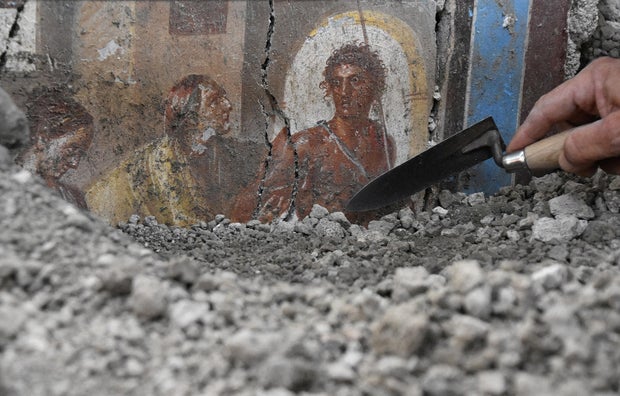Archaeologists in Pompeii unearthed a rare tiny home while excavating the site of the ancient Italian city, officials said. The home was buried beneath the ash and debris that wiped out Pompeii when Mount Vesuvius erupted in 79 A.D. but elaborate frescoes painted onto its interior walls have remained largely intact.
The house came into view during an ongoing construction project in one section of Pompeii Archaeological Park called Insula dei Casti Amanti, or House of Chaste Lovers, the park said in a translated announcement. Its size was uncommonly small compared with others found in Pompeii, including some situated close by, and adding to the intrigue is the fact that it contains such lavish art inside.
Parco Archeologico di Pompei/Handout via REUTERS
The frescoes mainly depict scenes from classic mythology. One well-preserved painting of Hippolytus and Phaedra, two characters from a Greek tragedy, gave the home its provisional name, the House of Phaedra. Hippolytus and Phaedra also appear in a small painting found elsewhere in the house.
Outside of those characters, archaeologists discovered a fresco depicting an embrace between a satyr — another figure from Greek mythology that is part-man, part-goat — and a nymph as well as one of a pair of deities thought to be Venus and Adonis, the park said. Another may be an illustration of the Judgement of Paris, another Greek myth, although the scene was difficult to decipher because the fresco had been damaged.
Parco Archeologico di Pompei/Handout via REUTERS
They found more artwork in the courtyard outside the home, which primarily included illustrations of plants and animals such as a bird of prey and two snakes facing each other. The snakes were positioned around an altar, according to the park, and people would have placed offerings there.
Some items from the last offering before the eruption were still there. Archaeologists discovered a ceramic incense burner as well as a lamp, which had traces of sprigs of scented essences detected through laboratory analyses. They also found colored marble and a sculpture of a face related to the Greek god Dionysus at the altar.
Park officials said the discoveries made at the ancient home, and the home itself, could help shed light on some of the changes Roman society was undergoing during the first century of the common era, particularly in Pompeii, since it is architecturally and stylistically different from its neighbors. A scientific paper discussing the house’s unusual layout was published in the archaeological park’s digital magazine focused on Pompeii.



